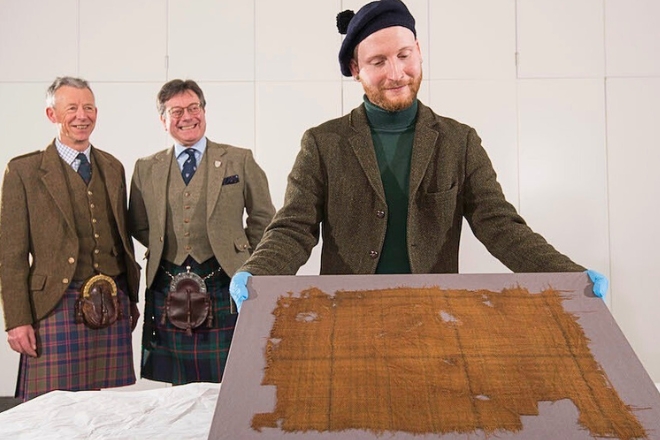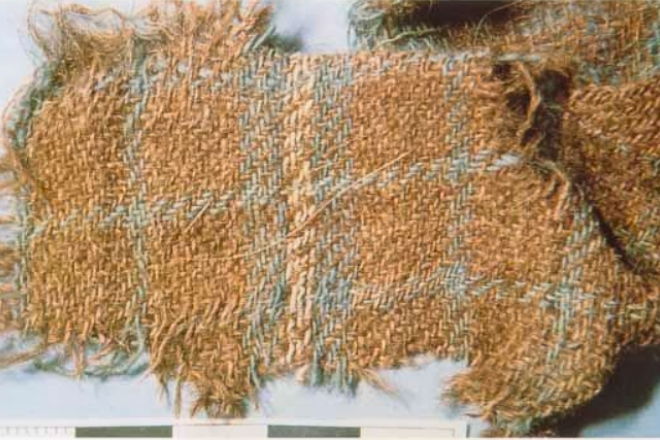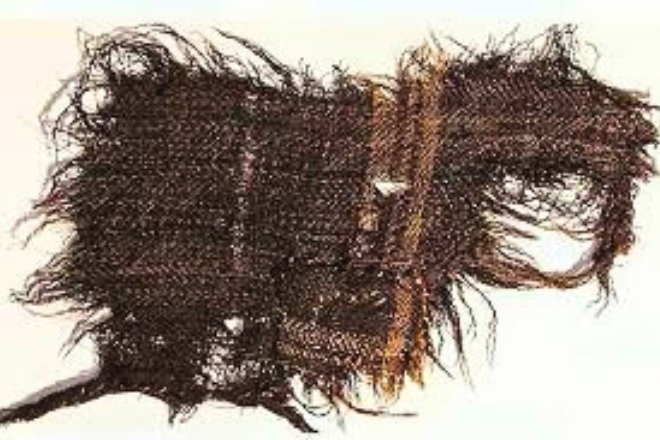
Step into the enchanting realm of Scottish tartan as we uncover its rich history and timeless allure. Join me on this captivating journey through the ages, where each thread weaves a tale of heritage and symbolism. From the vibrant attire of the Celts to the revered clans and regiments, tartan has become an iconic symbol of Scottish culture. into the origins of its distinctive patterns, tracing their significance to specific regions, events, and traditions.
Let the colours, checks, and craftsmanship mesmerise you as we celebrate the enduring beauty of tartan, an embodiment of Scotland’s pride and spirit. We will immerse ourselves in the vibrant world of tartan, tracing its roots from the remarkable dress of the Celts, as observed by the ancient Greek historian Diodorus Siculus, to the emblematic regiments and clans of the Scottish Highlands.
Tartan is a term that refers to a patterned cloth incorporating threads of different colors in both the warp and weft, commonly associated with Scottish culture. The pattern of tartan can be varied through different color combinations and thread count, resulting in numerous distinct designs. Throughout history, tartans have been recorded and cataloged based on their specific thread counts, creating a system of identification and recognition.
It’s important to clarify that the term ‘plaid’ is often mistakenly used interchangeably with tartan. However, ‘plaid’ specifically refers to a layer of cloth used as a garment or covering, such as a blanket. Tartan, on the other hand, denotes the distinct patterned cloth itself. In the context of Highland wear, a Day Plaid is a piece worn as part of the traditional attire and serves the purpose of a picnic blanket when not in use.

The word ‘tartan’ traces its origins back to the original Gaelic word ‘breacan,’ which translates to ‘chequered,’ ‘variegated,’ or ‘speckled.’ Tartan is believed to be a borrowed word, and one popular theory suggests its derivation from the Middle French term ‘tiretaine,’ which referred to linsey-woolsey material. This theory finds support in Scotland’s historical connections with France. However, alternative theories propose the Irish word ‘tarsna’ or the Scots Gaelic word ‘tarsuinn’ as possible origins.
Tartan as a weaving technique extends beyond Scotland and can be found in various cultures worldwide. For example, beautiful tartan-like weaves exist in India, China, and Japan, often crafted from cotton or silk. These global examples of tartan highlight the universality and enduring appeal of this weaving style. As we embark on our textile history tour, the first stop will take us to China, where we will explore the rich traditions and intricate techniques of their textile heritage.
In 1979, archaeologists unearthed mummies at the Qizilchoqa site near Hami, China. Noteworthy physical features included light brown or blond hair, thick beards on men, and long braids on women. The cloth fragments discovered on these mummies showed similarities to Indo-European neolithic clothing and textiles from the Hallstatt culture’s salt mines.
Of particular fascination were the ancient Tartan cloth fragments, dating back to 2000-1000 BCE, found at Qizilchoqa. They exhibit unique wool texture, twill weaving technique, and feature multiple color lines (up to six) with varying thickness of color bands.
This discovery suggests a potential link between the Tarim Basin mummies and the evolution of Celtic tartan, implying cultural exchange and shared origins. It underscores the existence of ancient trade routes and interconnections between distant civilizations, enriching our understanding of textile traditions throughout history.
The history of Scottish tartans is a fascinating tale spanning centuries. From the earliest mentions in the 12th century to their revival in the 18th and 19th centuries, tartans have held cultural significance. Written records and legal documents reveal tartan’s increasing prominence, with notable mentions in expenses and detailed descriptions of garments. The progression of documentation, particularly through influential tartan mills’ business records, sheds light on the development and usage of tartan designs. While artistic depictions were initially sparse, ancient art forms influenced tartan patterns.

Over time, tartan became more prevalent in artworks, reflecting its growing cultural significance. The 18th and 19th centuries marked a revival era driven by Romanticism and a renewed interest in Scottish heritage, elevating tartan to international recognition. Today, tartans remain cherished symbols of Scottish identity, their history interwoven with the fabric of Scottish culture.
The Falkirk tartan is a significant ancient Scottish cloth dating back to Roman times. It was discovered within a clay pot containing Roman coins, highlighting its true value. The tartan’s connection to Celtic tweed and Hallstatt fragments is evident in its twill weave. Woven from undyed yarn in a two-coloured herringbone pattern, it is known as the “poor man’s plaid” due to practicality. Adopted by cattle drovers and shepherds,

it is also associated with the Duke of Northumberland’s piper. Its direct descent from Roman times is uncertain, but its enduring legacy is represented in modern interpretations. Consequently, the Falkirk tartan acquired alternative names such as the “Border” or “Border Reiver” tartan. It found usage as a family tartan for the surname “Shepherd” and even became associated with the personal piper of the Duke of Northumberland.
The Hallstatt culture, thriving from the 8th to the 5th century BCE, was an advanced precursor to the La Tène culture. Through extensive trade networks, it spread a common art style, religion, and language across Europe. Nestled in the Austrian Alps, the lakeside village of Hallstatt offers a glimpse into this ancient world. Salt, its primary export, shaped its prosperity and facilitated cultural exchange.

Well-preserved artefacts found in the salt mines, including twill ‘tartan’ designs, influenced styles for centuries. The enduring legacy of the Hallstatt culture continues to captivate, connecting us to our ancient past.
The discovery of the Tarim Basin Tartans in Ürümchi, China, by Elizabeth Barber in 1993 revealed the oldest tartans ever found. The well-preserved mummies, with Caucasian features in contrast to the expected Mongoloid traits, challenge assumptions about the region’s inhabitants. Cloth fragments found on the mummies resemble Neolithic clothing from Western Europe, suggesting Indo-European origins.

These ancient textiles provide insights into migration patterns and cultural exchanges in the Tarim Basin, highlighting the need for further investigation to unravel the complexities of the area’s ancient history in relation to the Silk Road.

Tartans held great significance among the ancient Celts, serving as a symbol of tribal allegiance and as everyday attire. Early Roman writings from the ADs referred to them as ‘striped’ due to the lack of a word for the intricate plaid patterns. An extraordinary discovery in Volubilis, an ancient Moroccan city, took us thousands of miles away from Scotland. A statue dating back to the 200s unveiled a fragment adorned with a tartan pattern on the pants of a prisoner figure. Crafted with remarkable precision, the statue featured bronze, silver, and other alloys, meticulously
replicating the texture of a plaid tartan cloth. Despite only three feet remaining today, it stands as a testament to one of the oldest known tartans, captivating us with its enduring legacy.
Tartan clothing held significant cultural value among the ancient Celts. Historical evidence reveals that Celts adorned themselves with tartan cloaks and pants, described as ‘striped’ by Roman writers. The oldest known depiction of tartan comes from a bronze fragment discovered in North Africa, part of a statue of Roman Emperor Caracalla found in Volubilis.
This depiction showcased the conqueror’s triumph over the Caledonians, the Roman term for Celtic tribes north of Hadrian’s Wall. The surviving Tartan Pants fragment is of great importance, as it provides a remarkable representation of the colour and texture of this iconic textile, preserving its cultural legacy.
The origin of the first tartan is unknown.
Ancient tartans refer to early forms of tartan designs.
The first clan of Scotland is believed to be Clan Donnachaidh.
Tartan is not a clan but a pattern used by clans.
Clan tartans were developed over time and no specific inventor is attributed to them.
Input your search keywords and press Enter.
